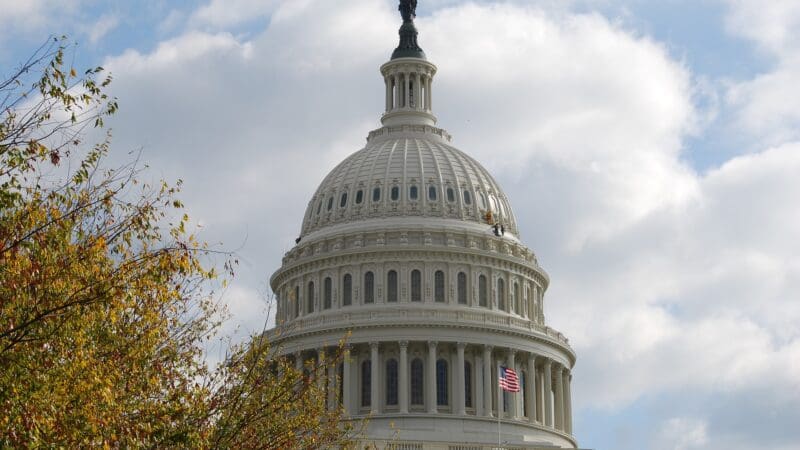In the best of times, teaching can be a challenging profession. In the past year, it has at times seemed nearly impossible.
Due to the pandemic, there was a cataclysmic shock to the way teaching and learning is done. Teachers shifted, in a matter of days and weeks, to new ways of doing things. They learned new platforms and tools. They pulled double duty, planning for simultaneous in-person and remote students. They made plans with incomplete and rapidly changing information. And they continued to find ways to innovate, adapt, and support students.
Unsurprisingly, educators across the country again found a way to rise to the moment after January 6.
While we all grappled with news of the unprecedented, violent attack at the U.S. Capitol, teachers were not only sifting through their own shock, sadness, anger, and concern, but also figuring out how to help their students.
On Twitter, teachers shared with us ways they were considering using the Question Formulation Technique to help students process the immediate aftermath:
Using @RightQuestion question format seems like perhaps a way to start as kids come in with lots of concerns and questions. #sschat
— Glenn Wiebe 🇺🇦 (@glennw98) January 7, 2021
What #QFOCUS are you using in class today, after grounding and listening to students?
Yesterday afternoon, crowds of people in a violent and angry mob stormed the US Capitol building. What questions do you have? @RightQuestion @RothsteinDan #qft #questionformulation #Jan6th— Ariela Rothstein (@Arielateach) January 7, 2021
@RightQuestion Institute has resources for centering student questions in classroom or Zoom. Use headline as the Q-Focus and have students generate questions, categorize & prioritize together: Great context for student-to-student talk and deep thinking. https://t.co/L9kTlCqzvS
— Instruction Matters (@BKNorthNYCDOE) January 8, 2021
The QFT is, for many educators, a go-to tool for tackling difficult topics or controversial current events in the classroom. An image, short video clip, primary source, quotation from an elected official, or a comparison of two headlines from different news outlets could all work as a Question Focus — a stimulus for generating questions. This allows students to name their own observations, concerns, confusion, and misconceptions about the violent events of January 6.
Erica Flores and Laurie Splinter Day, who shared their examples on Twitter, both used photographs of the January 6 riot to jumpstart student questioning. Here are some questions students asked:
- Did anyone tell them to do it or did they just do it on their own?
- Why was the destruction of government property considered peaceful while the actually peaceful protests for BLM were considered riots?
- Is it disrespectful to have the Confederate flag in there?
- Where did they hide the congressmen?
- How many people died/were injured?
Teachers can then tailor subsequent steps or lessons around areas that genuinely interest students. For students to question and process what’s happening, it is important that they feel they’re in a safe space where their voice matters.
Here at the Right Question Institute, we’re still processing and questioning what happened, what’s happening, and what will happen in the coming, weeks, months, and years. While we still don’t have many answers, we do know that educators will continue to find ways to help students ask the important questions. Here are some resources that may be helpful for approaching any controversial or difficult current event in the classroom:
- Creating A Safe and Lively Classroom Climate: A Toolkit for Teachers and School Leaders (The Right Question Institute)
- Controversy as Catalyst for Questioning: Students Question the Rolling Stone Cover after Marathon Bombing (The Right Question Institute)
- What To Say To Kids When The News Is Scary (NPR)
- Teaching With Controversy: Using Questions to Promote Dialogue (IllinoisCivics.org)
- The Art of Asking: It’s Not About What You Know — But Knowing What To Ask (ISTE)
- TPS and Fast-Moving Events (TPS Teachers Network, free with login)
Many professional development providers and educational organizations have pulled together excellent resources and lesson plans. Here are some:
- Encouraging Student-Generated Primary Sources During Historic Events (Teaching with the Library of Congress): Encourage students to record their own responses as primary sources for the future — students act as agents of the historical record.
- Responding to the Insurrection at the U.S. Capitol (Facing History and Ourselves): One of two lesson plans from Facing History for how to create a safe space for dialogue and reflection to help students process the insurrection.
- Current Events Teacher Checklist (Facing History and Ourselves): A checklist from Facing History for planning discussions of current events.
- Peaceful Transitions (Bill of Rights Institute): Primary sources and lesson ideas for teaching peaceful transitions of power throughout history.
It is in times of great uncertainty, confusion, or upheaval, when confronted with a lack of information or misinformation, that we most need to be able to ask questions of ourselves, our peers, our elected officials, and our institutions.
Asking questions is the practice of recognizing our own agency even in situations where we might otherwise feel powerless. Questions organize what we don’t know and what we most need to know. Articulating a question asserts our voice and our ability to go find the answer. In that way, asking a question reclaims an internal sense of power and self-efficacy. Not knowing becomes a little less scary.
And while the QFT works well as an impromptu tool for addressing current events with students, it may also help all of us, as a nation, begin to ask some of the questions that come next: What can we do? How do we move forward from here?
